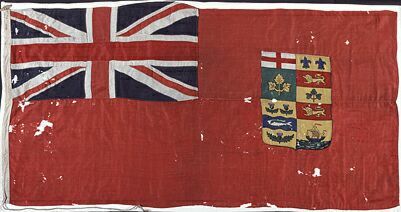- Reaction score
- 0
- Points
- 210
Dominion of Canada no more!
- we are just plain "Canada"
Gord
[i]Use of Canada and Dominion of Canada
Neither the term Dominion of Canada nor Dominion government appear in the 1867 Act; however, the former appears in the Constitution Act, 1871 — usage of which was "sanctioned" [16] — and both appear in other texts of the period, as well as on numerous Canadian bills before 1967.
Until the 1950s, the term Dominion of Canada was commonly used to identify the country. As Canada increasingly acquired political authority and autonomy from the United Kingdom, the federal government increasingly began using simply Canada on state documents. The Government of Prime Minister Louis St. Laurent enacted a formal policy of removing the word "dominion" from all updated bills and statutes. [2]
The Canada Act 1982 refers only to Canada and, as such, it is currently the only legal (as well as bilingual) name. This was also reflected later in 1982 with the renaming of the national holiday from Dominion Day to Canada Day. Section 4 of the 1867 BNA Act declares that:
Unless it is otherwise expressed or implied, the Name Canada shall be taken to mean Canada as constituted under this Act.
and this has been interpreted to mean that the name of the country is simply Canada.[/i]
http://en.wikipedia.org/wiki/Canada's_name#Use_of_Canada_and_Dominion_of_Canada
- we are just plain "Canada"
Gord
[i]Use of Canada and Dominion of Canada
Neither the term Dominion of Canada nor Dominion government appear in the 1867 Act; however, the former appears in the Constitution Act, 1871 — usage of which was "sanctioned" [16] — and both appear in other texts of the period, as well as on numerous Canadian bills before 1967.
Until the 1950s, the term Dominion of Canada was commonly used to identify the country. As Canada increasingly acquired political authority and autonomy from the United Kingdom, the federal government increasingly began using simply Canada on state documents. The Government of Prime Minister Louis St. Laurent enacted a formal policy of removing the word "dominion" from all updated bills and statutes. [2]
The Canada Act 1982 refers only to Canada and, as such, it is currently the only legal (as well as bilingual) name. This was also reflected later in 1982 with the renaming of the national holiday from Dominion Day to Canada Day. Section 4 of the 1867 BNA Act declares that:
Unless it is otherwise expressed or implied, the Name Canada shall be taken to mean Canada as constituted under this Act.
and this has been interpreted to mean that the name of the country is simply Canada.[/i]
http://en.wikipedia.org/wiki/Canada's_name#Use_of_Canada_and_Dominion_of_Canada



